Saint John (Ioan) Cassian – the Roman
His Life: The West gave very few Church fathers. St John Cassian was only technically one of them. He was born in the south of Romania, in a region that had been visited by the Apostle Andrew, in about 360 AD. As a son of a wealthy family, St John was given a very good education. While he was still in his teens, however, he and his friend Germain heard of the monks in the deserts who gave their lives to Christ our Saviour. These two friends love the Lord and His Holy Church and they longed t go to a monastery and give their lives to Christ also. The two youths set out for the Holy Land. After a long and difficult journey by sea and by land, they came at last to Bethlehem. Here the two entered a monastery and began to struggle for their salvation. Saint John and Germain spent several years in the monastery of Bethlehem and they heard many stories about the wondrous monks of Egypt. The monks in Egypt were the most spiritual and wisest of all monks, and the two young men desired to visit them and learn from them. The abbot of their monastery gave them a blessing and they set out. After a long boat trip from the city of Joppa, the friends arrived in the town of Thennesus, on the Nile River. From there, they began to visit all the famous monasteries of Egypt. Most important, Saint John Cassian wrote down whatever the great elders and fathers of Egypt told him. These teachings he later put into a book which he called “Conferences” and this book is one of those works we call “Patristic Writings”.
Saint John and his friend Germain spent seven years in Egypt, not only learning from the monks, but also living their life with them. The two learn the true monastic life and loved the desert, but at the end of seven years, they had to return to their monastery in Bethlehem. They stayed in Bethlehem for only two more years and then, with the blessing of their abbot, they returned to Egypt for two more years. After this, the two monks went to Constantinople, where the great saint and father of the church John Chrysostom, was patriarch
Saint John Cassian and Germain stayed in Constantinople for about 5 years.
Saint Germain (Gherman the Romanian)
Saint John Chrysostom ordained them both – he made Germain a presbyter and Saint John Cassian a deacon, and he appointed both of them to the duties of his cathedral. The two learn much from our holy father John Chrysostom.
When Saint John Chrysostom was slandered and driven into exile in 405, Saint John Cassian and Germain went to Rome to try to get support from Chrysostom. Here, Saint John Cassian was ordained a presbyter. The saint then returned to France (Gaul) and built a monastery in the forest near the town of Marseille. His monastery was very much like those in Egypt and the Holy Land and soon monks came to him. Other monasteries began to grow up in the West, and most of them followed the example of Saint John Cassian’s monastery.
Those were the days when the West was still Orthodox and Saint John Cassian was a great Orthodox father who helped to defend the Orthodox Faith against false teachings. In his time, the two great falls teachings of the West were those of Pelagius of Britain and Augustine of Hippo. In addition to these, the heresy of Nestorius was harming the faithful and Saint John wrote a very important work against the teachings of this heretic. Saint John Cassian’s other famous work is called “The Institutes” and it gave the rules and teachings for the monasteries.
Our holy father John Cassian was the true founder of Orthodox monasticism in the West. He was a great teacher and defender of our Saviour’s Holy Orthodox Faith. This Holy Father reposed in the Lord at the age of 75, in the year 435. His sacred relics were buried in his own Monastery of Saint Victor. John Cassian’s relics are kept in an underground chapel in the Monastery of St Victor in Marseilles. His head and right hand are in the main church there.
(Life Taken from the book “Great Fathers of the Church” by Archbishop Lazar Puhalo)
Saint John Cassian: On The EIGHT PRINCIPAL VICES (Philokalia)
(Precious Head of St John)
The Cave of St. John Cassian and the Monastery dedicated to the Saint in Southern Romania
Hidden from sight, through the rough forms of the Hill of St. John Cassian, the cave opens into a rocky wall, above the valley of Casimcea. A narrow path, with steps carved in limestone, arranged recently, is leading to the entrance of the cave. The cave is spacious and without the usual moisture.
The central space of the cave continues laterally with narrow and long galleries. From the left side of the cave one can get to a room not to big known among locals for centuries, as the Holy Cell of Saint John Cassian.

The ancient monks used the cave as a dwelling place but also for liturgical services, the inner part of the cave resembles much with a church. On the cave walls, incised in limestone, one can distinguish signs of crosses, traces of inscriptions, scattered Cyrillic letters and the word “Aghios “= Holy (Greek).
Monastery dedicated to St John from Romania
(Old inscriptions in stones, the cave of St John Cassian)











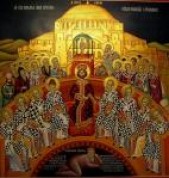 Christian Dogma
Christian Dogma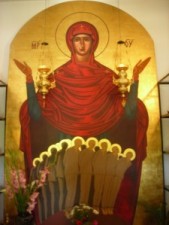 Christian Martyrs
Christian Martyrs Christian Orthodox Churches and Monasteries
Christian Orthodox Churches and Monasteries Christian Sermons and News
Christian Sermons and News Church's Teachings on Fasting
Church's Teachings on Fasting Ecumenism – a Great Heresy
Ecumenism – a Great Heresy Father George Calciu
Father George Calciu Life_a Sacred Gift form God
Life_a Sacred Gift form God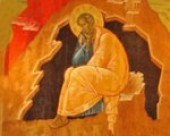 Orthodox Saints and Church Fathers
Orthodox Saints and Church Fathers Spiritual Elders
Spiritual Elders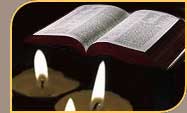 Daily Bible Readings
Daily Bible Readings Journey to Orthodoxy
Journey to Orthodoxy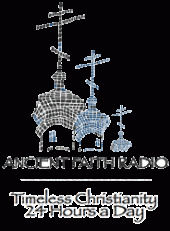 Listen to Ancient Faith Radio
Listen to Ancient Faith Radio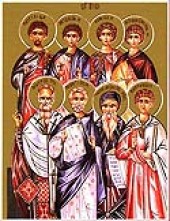 Orthodox Calendar of Feasts and Saints
Orthodox Calendar of Feasts and Saints Orthodox Christian Mission Center
Orthodox Christian Mission Center Orthodox Institute
Orthodox Institute OrthodoxChristianNetwork TV
OrthodoxChristianNetwork TV
1 comment
Comments feed for this article
August 12, 2014 at 11:15 PM
Sts. Hippolytus and Cassian | The Society of St. John Bosco, Inc.
[…] St. Cassianimage credit […]